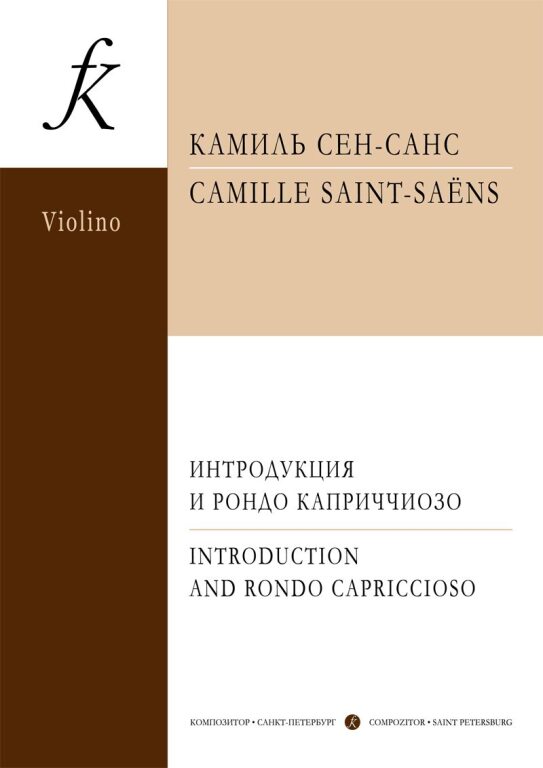Saint-Saëns, Camille: Introduction and Rondo Capriccioso for Violin and Piano. Ed. by Yair Kless
Saint-Saens began his musical career as a musical pioneer, introducing to France the symphonic poem and championing the radical works of Liszt and Wagner at a time when Bach and Mozart were the norms. By the dawn of the 20th century, Saint-Saens was an ultra-conservative, fighting the influence of Debussy and Richard Strauss. This is hardly surprising - Saint-Saens's career began while Chopin and Mendelssohn were in their prime, and ended at the commencement of the Jazz Age.
As a composer, Saint-Saens was often criticized for his refusal to embrace romanticism and at the same time, rather paradoxically, for his adherence to the conventions of 19th-century musical language. He is remembered chiefly for works such as The Carnival of the Animals, which was not published in full until after his death - reportedly because Saint-Saens feared it would affect his reputation as a serious composer, the Introduction and Rondo Capriccioso for violin and orchestra, the operas Samson and Delilah and Henry VIII (of which only the first is frequently performed today), the Symphony No. 3, the second, fourth and fifth piano concertos, the third violin concerto, the first cello concerto, and the first violin sonata.
The Introduction and Rondo Capriccioso in A minor Op. 28, is a composition for violin and orchestra written in 1863 for the virtuoso violinist Pablo de Sarasate. Since its 19th-century
 Deutsch
Deutsch English
English Español
Español Français
Français Polski
Polski Română
Română Slovenský
Slovenský Slovenščina
Slovenščina 中文
中文